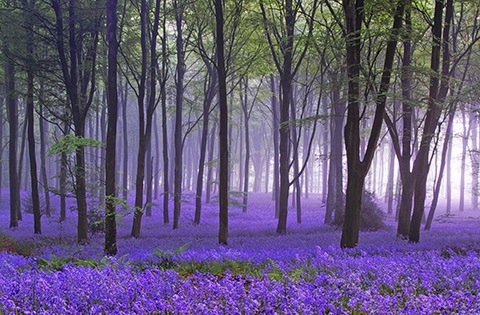


Bluebells Of England
Bluebells
Hyacinthoides non-scripta (formerly Endymion non-scriptus or Scilla non-scripta) is a bulbous perennial plant, found in Atlantic areas from north-western Spain to the British Isles, and also frequently used as a garden plant. It is known in English as the common bluebell or simply bluebell, a name which is used in Scotland to refer to the harebell, Campanula rotundifolia. In spring, H. non-scripta produces a nodding, one-sided inflorescence of 5–12 tubular, sweet-scented violet–blue flowers, with strongly recurved tepals, and 3–6 long, linear, basal leaves.
There are several different types of bluebell in the UK. The familiar native bluebell, Hyacinthoides non-scripta, is characteristic of woodlands, hedges and other shady places. There is also a Spanish bluebell, Hyacinthoides hispanica, grown in gardens and found in the countryside when it is dumped there. A hybrid, Hyacinthoides x massartiana, is now more common than its Spanish parent.
Here are some tips to help you find out whether your bluebells are native or not.

A soliflore, created in 1978. A cult classic. Pure and unadulterated distillation of the scent of bluebell woods. Utterly beguiling and unique. Perhaps the most ‘British’ of our fragrances.
Penhaligon’s Bluebell has been the best-known bluebell fragrance since its launch in 1978, as well as a longtime best-seller for this British perfume house. Developed by perfumer Michael Pickthall, and described as “the pure and unadulterated distillation of the scent of bluebell woods,” Bluebell includes notes of citrus, hyacinth, lily of the valley, cyclamen, jasmine, rose, galbanum, clove, and cinnamon. It has reportedly been worn by women as varied as Princess Diana, Margaret Thatcher, and Kate Moss.
